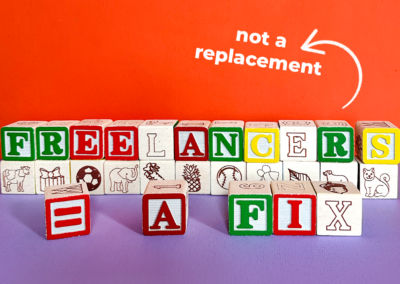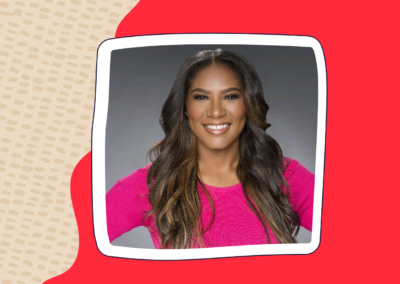When Thom Pulliam was growing up, he was captivated by The Truman Show. He admits that the movie—which depicts how powerfully society is influenced by the media—is a little Orwellian. “But it definitely opened up my eyes to the commerce of marketing, the robust industry that it is,” Thom says. “It has an ability to create lifestyles and enable people to really make their way in the world.”
For the last 14 years as a brand strategist and communications planner, Thom’s been doing exactly that. He’s brought widespread attention to a new food composter, helping to tackle the issue of food waste. He’s promoted a cloud computing service, allowing computer users to work more efficiently. He’s helped a global hotel chain recruit staff, getting people back to work after the pandemic. Through these projects and many more, he’s harnessed the power of marketing to raise awareness and solve problems.
Thom honed his skills within the strategy departments of several agencies, and he benefited from those experiences. But he also became keenly aware of the drawbacks inherent in the agency culture. So, once he’d developed a broad skill set, he pivoted away from full-time agency work and began taking on clients as a contractor.
“I still work with agencies, but now it’s on my own terms,” he says. While he’s heartened by these new opportunities, he has some words of warning for the industry he loves. He’s identified three major problems with the traditional agency model.
Problem #1: Job insecurity
After graduating college, Thom took the first of many brand strategy roles at marketing agencies. “That whole lifestyle of being paid to be creative and work and live in a dynamic environment—it all really attracted me early on in my career,” he says. “Agencies have designers and copywriters, creative directors, and art directors right there on staff.” He imagined an exciting culture of collaboration and imagination.
Unfortunately, the first three firms that employed him were plagued by mismanagement and dwindling budgets. “I worked at several independent agencies that wished to maintain their profit margins more than cultivate a dynamic creative culture of talent,” Thom says.
He began to notice a pattern: Client losses would quickly lead to layoffs, fostering an atmosphere of uncertainty and job insecurity among the creative team. Without the stability and psychological safety of assured, long-term employment, young marketers were always looking for other opportunities. “This creates a very chaotic, precarious culture within agencies, which takes a huge toll on talent,” Thom says. “And that’s why over time so many people choose to look elsewhere outside of agencies.”
Problem #2: Lack of integration and collaboration
Thom entered the industry at a time when brand strategists wielded a wide range of marketing skills and used a variety of tools. But over the last five to 10 years, marketing agencies have begun to divide the work among specialists.
“Nowadays,” Thom says, “agencies will tell the client, ‘You’re going to have a strategy director and a senior strategist. But you also need digital strategists, a social strategist, a PR strategist, and a communications strategist.’” This fragmentation has resulted in tension between departments, as the head of each specialty must compete for resources out of the same budget. A team that’s meant to work together on a project finds itself with scores of competing interests.
“For instance, the people in data science and analytics want to grow their department, and they have different deliverables and skill sets than the brand strategy folks,” Thom says. Rather than working together on a project, the two specialties are pitted against one another.
In this zero-sum competition for resources, Thom has seen the brand strategy departments decline, while the communication and social strategy specialties have increased. Junior marketers, trained in these ever-narrowing specialties, are missing out on the broad learning opportunities that he was afforded early in his career. Higher-level marketers don’t have time to collaborate with other disciplines to produce integrated work—and they barely have the energy and resources needed to train up their junior staff.
Problem #3: Corporate waste and little accountability
Large, renowned agencies are brimming with resources and creative talent. “And they’re really fabulous if you need to do a big awareness-generating TV campaign,” Thom says. But he’s also witnessed corporate waste and a lack of accountability. Long meetings with dozens of staffers, all making hundreds of dollars per hour, have convinced him that some agencies aren’t good stewards of their clients’ money. A “swarm approach,” he says, is inefficient and wasteful.
He’s been particularly discouraged by the methods that some agencies employ to win a client’s business. “There’s the classic bait-and-switch of pitching a really big game with your star players to package something lovely,” he says. “But once the business is awarded and the fees start rolling in, they’re not actually staffing up to fulfill the strategies they won with.”
Instead, the project is carried out by junior staffers, while the client’s money goes elsewhere. “They might use it to hire a CMO or some other thing that the agency has been wanting to invest in, like an office, but not to really fully serve and execute the client’s wishes in the best way.”
Even at smaller, independent agencies, owners can become disconnected from the client’s needs. At one firm where Thom worked, a budgeting decision led to layoffs that included Thom and several other creatives. But the owners hadn’t foreseen how this would affect the work they’d promised to one of their clients.
Amidst the stress of his job loss, Thom also worried that no one was now in place to deliver the client’s project. He quickly realized that the agency owners were unaware of what had been promised. In the end, he negotiated an extension to complete the project before leaving. “If it wasn’t for me being proactive and having some integrity about the work I was assigned, the client would have suffered,” he says.
The future of marketing
Thom may have taken a step out of the agency world, but he hasn’t lost his passion for brand strategy. He continues to explore ways to unlock peoples’ desires and to influence them with meaningful, thought-provoking marketing campaigns. “It’s still about getting really close to the customers, understanding what makes them tick, and being able to translate those behavioral and psychological insights into a strategy that can bring to life some awesome business results for clients,” he says.
In fact, he sees the challenges in the agency world as an opportunity for marketers to forge a new model. “With clients’ budgets declining, everyone is looking for efficiency,” he says.
He’s encouraged by innovative solutions like the focused “team of experts” model offered by Run By Rosie. “It’s about increasing the efficiency and cost-effectiveness of the work while still putting the people first,” he says. “[Marketers are] able to have a safe container to do a properly scoped project without all of the chaos and background noise.
On the client side, brands benefit from interfacing directly with the individual marketing players, whose well-defined roles and clearly allocated resources allow them to focus on doing their best work.
“I think the future of marketing operations really looks like brands and clients taking more responsibility,” he says. Rather than paying for “flashy, famous creative agencies,“ Thom expects that brands will shift towards hiring targeted teams that can move quickly and knowledgeably. And in the process, he says, “it will open up the spectrum to a much wider variety of talent and specialists.”



